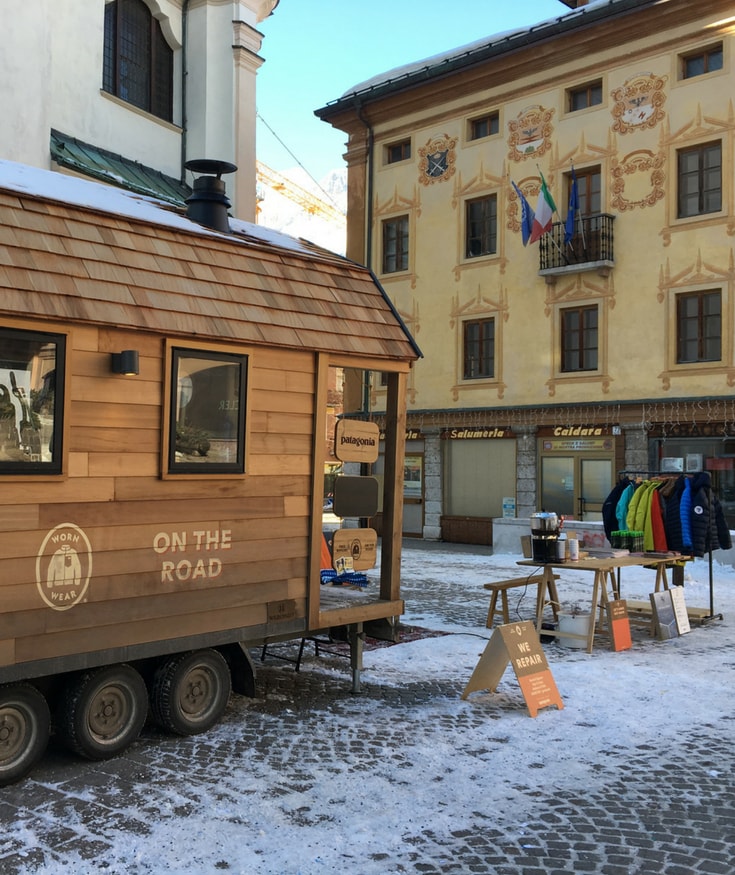Time to Repair: How Patagonia is encouraging you to wear worn
Can keeping our clothes for longer and fixing busted zips help reduce our impact on the planet? It’s certainly a stitch towards it.
Madeleine Burbidge

Scrambling into a ski lift in the Italian Dolomites last February, I noticed a fit, silver-haired man, who appeared to be in his early 70s but could have been over 80.
And as the gondola ascended the mountain to drop us on its precipitous slopes, I caught myself staring at him. I was mesmerized not because he was still skiing (although, of course, that is inspiring). No. It was because he was wearing the same ski-suit he’d probably worn when he was 25.
The colour of his all-in-one had clearly once been British postbox-red. Now, it was patchy pink. But other than the fading, the suit looked in excellent condition. Not that long ago, I’d have thought him old-fashioned, but now, I began to think of all the pistes and vistas that ancient ski suit had seen and all the experiences that were stored in that suit’s “memory.” The man, like most of his generation, probably had a more practical approach to keeping this suit for decades than my romantic notion. But even so, I found him an example of how I need to value and try to better look after my stuff.

Then, a day or two later, while après-skiing in Cortina, a town that appears at first glance to epitomize conspicuous consumption, I stumbled on something radical in the piazza. Near the opulent windows of Salvatore Ferragamo and Gucci sat a little wooden hut on wheels. I was charmed by its incongruous presence.
I noticed a Patagonia (the outdoor apparel company) logo and thought: oh it’s a shop, somewhat disappointed. I peeked in through the door and was surprised to see a sewing machine and bales of cotton threads. And then I realised nothing was in fact for sale. Rather, the hut was a mini-factory, repairing anyone’s technical gear (whether Patagonia or not). As I hovered, a man came to collect, if I recall correctly, some non-Patagonia ski trousers that had a previously busted zip.
According to Patagonia CEO Rose Marcario, repairing your things is a “radical act” these days, which is an extraordinary statement if you take a moment to think about it.
“Fixing something we might otherwise throw away is almost inconceivable to many in the heyday of fast fashion and rapidly advancing technology,” says Marcario. “But the impact is enormous. As individual consumers, the single best thing we can do for the planet is keep our stuff in use longer.” For instance, if you keep a piece of clothing for just an extra nine months, Patagonia says, you’ll help reduce the related carbon, waste and water footprint by 30 percent. And remember, that means you’ve saved money too.

It’s easy to be skeptical: Patagonia’s anti-consumerist drive, which has included Black Friday advertisements titled “Do not buy this jacket” with details about the ecological cost of its production, has actually led the company to increase revenue (to an estimated $207 million USD in 2017).
But, it seems to me that Patagonia practices what it preaches and is the torchbearer for the future of successful, sustainable business. Patagonia is not green-washing their image or doing piecemeal PR stunts. The repair hut I encountered in the snowy piazza (Cortina was just one of 50 European towns and cities that the hut visited this past winter) is part of a much bigger, long-term initiative by Patagonia. The Worn Wear program includes the repair of over 40,000 items per year in Patagonia’s US repair factory (employing 45 people), the training of staff in stores to make small repairs and a partnership with iFixit with 40 free repair guides for Patagonia products on their website. And perhaps most revolutionary of all, you can earn credit on most of your unwanted Patagonia. You can earn from $10 USD for a pair of board shorts up to $100 USD for a three-layer snow shell. Patagonia then washes the trade-ins and sells them on their Worn Wear second hand clothing website.
As for me, the man in the 1970s ski suit and the Patagonia repair hut has made me reassess my 10-year-old ski jacket. I was planning to replace it. But I’m going to keep it now. That jacket fits me, works just fine against the cold, and now, the next time I scrub it clean, I’m going to reminisce about that black piste I skied with the gentleman in the faded pink suit racing down ahead of me.



